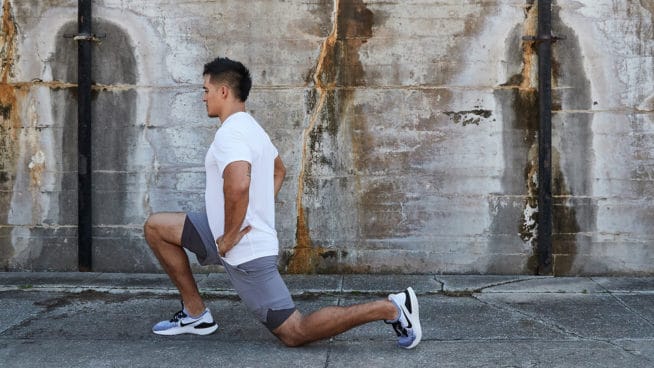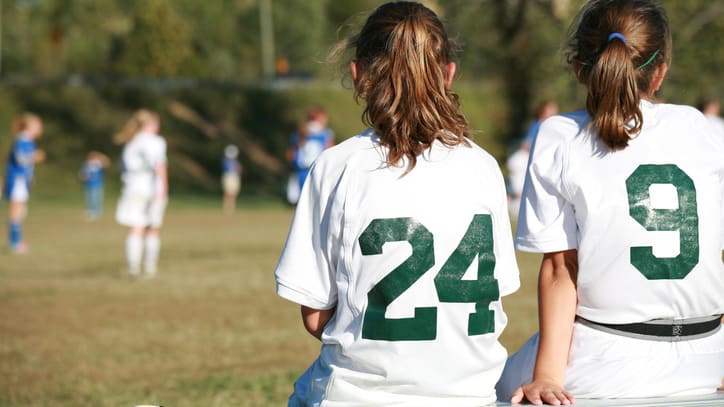Do Student-Athletes Need Sports Insurance?
![]()
As the best student-athletes in college explore their prospects of playing professionally, many consider the possibility of taking out a sports insurance policy as a backup plan to receive money in case an injury prevents them from playing in the pros.
But insurance is never simple, and sports insurance policies rarely cover everything a student-athlete thinks they do. This can lead to unpleasant surprises, as when athletes get injured and discover they are not as secure as they had expected.
The main athlete insurance program is the NCAA’s “Exceptional Student-Athlete Disability Insurance Program,” which states that it provides student-athletes “the opportunity to protect against future loss of earnings as a professional athlete” in case of sickness or injury.
Eligibility
The first thing to know about this is that only a few select athletes are eligible for the coverage. The athletes must have demonstrated the “professional potential” to be selected in the first two rounds of the NFL or NHL draft, or the first round of the NBA, WNBA, or MLB draft.
From there, the kind of insurance an athlete gets can be tricky. The simplest provision concerns cases where an athlete becomes permanently disabled because of an injury and cannot play at all. Under those circumstances, the insured athlete can normally collect, but the amount depends on how high he or she was projected to be drafted. Former NFL quarterback Brady Quinn notes that the payout for an NFL player slated for the Top 10 is around $5 million, while an athlete slated lower will receive less.
Loss of Value Insurance
The second kind of coverage deals with “loss of value” insurance. Suppose a potential professional athlete suffers an injury that does not end his playing days, but significantly lowers his draft stock and thus his salary. Under those circumstances, loss of value insurance is supposed to make up the difference.
But payouts on loss of value insurance are much harder to come by, as the example of Cedric Ogbuhei showed. Ogbuhei could have been a Top 5 draft pick in the 2014 NFL Draft. Instead, he chose to stay at Texas A&M another year, confident that his insurance policy would protect him in case he slipped or got injured. That December, he tore his ACL. He slipped to 21st in the 2015 NFL Draft, potentially losing around $10 million. But Ogbuhei had not fallen far enough down the draft board for his policy to kick in, and he found himself with far less guaranteed money.
Given the difficulty of collecting loss of value insurance, student-athletes should think hard before purchasing it. While disability insurance will ensure that the student gets something, especially in the case of hospital negligence, loss of value insurance has no guarantees.
Regular NCAA Athletes
What about regular NCAA athletes, the ones who can never dream of making the professional leagues? These athletes face serious questions about their health insurance and what an injury could mean for their scholarships.
There is the famous case of Kevin Ware, who broke his leg playing basketball for Louisville in the NCAA tournament. Although the University of Louisville stressed that Ware was not in danger of losing his NCAA scholarship, the university could have revoked his scholarship, cut him from the team, and forced his family to pay for his medical care.
The NCAA states that all of its student-athletes must have health insurance, but it does not specify who actually pays for it. And while nearly all Division I schools and the vast majority of Division II and III schools provide coverage for their athletes, there are still schools that do not.
Furthermore, ABC News reported that although schools cannot revoke a scholarship due to an injury or illness, most athletic scholarships are for one year only, renewable at the discretion of the university. The schools can choose not to renew a scholarship at the end of any year, leaving the student-athlete and his or her family high and dry.
In response to complaints about this state of affairs, some universities have discussed implementing four-year guaranteed athletic scholarships, with insurance. But even that may not be enough given the long-term physical damage that can result from playing college sports for four years. This is especially true for football players, as concerns continue to rage about the long-term effects of head trauma on their brains.
Whether or not a student-athlete has a realistic shot of making it to the pros, health insurance is a sticky topic, especially where universities are not doing enough. Since colleges get their athletes to play for free, they should at least ensure that the players’ long-term health will not be affected and they will not lose their athletic scholarships because of an injury they suffer on the field.
[cf]skyword_tracking_tag[/cf]RECOMMENDED FOR YOU
MOST POPULAR
Do Student-Athletes Need Sports Insurance?
![]()
As the best student-athletes in college explore their prospects of playing professionally, many consider the possibility of taking out a sports insurance policy as a backup plan to receive money in case an injury prevents them from playing in the pros.
But insurance is never simple, and sports insurance policies rarely cover everything a student-athlete thinks they do. This can lead to unpleasant surprises, as when athletes get injured and discover they are not as secure as they had expected.
The main athlete insurance program is the NCAA’s “Exceptional Student-Athlete Disability Insurance Program,” which states that it provides student-athletes “the opportunity to protect against future loss of earnings as a professional athlete” in case of sickness or injury.
Eligibility
The first thing to know about this is that only a few select athletes are eligible for the coverage. The athletes must have demonstrated the “professional potential” to be selected in the first two rounds of the NFL or NHL draft, or the first round of the NBA, WNBA, or MLB draft.
From there, the kind of insurance an athlete gets can be tricky. The simplest provision concerns cases where an athlete becomes permanently disabled because of an injury and cannot play at all. Under those circumstances, the insured athlete can normally collect, but the amount depends on how high he or she was projected to be drafted. Former NFL quarterback Brady Quinn notes that the payout for an NFL player slated for the Top 10 is around $5 million, while an athlete slated lower will receive less.
Loss of Value Insurance
The second kind of coverage deals with “loss of value” insurance. Suppose a potential professional athlete suffers an injury that does not end his playing days, but significantly lowers his draft stock and thus his salary. Under those circumstances, loss of value insurance is supposed to make up the difference.
But payouts on loss of value insurance are much harder to come by, as the example of Cedric Ogbuhei showed. Ogbuhei could have been a Top 5 draft pick in the 2014 NFL Draft. Instead, he chose to stay at Texas A&M another year, confident that his insurance policy would protect him in case he slipped or got injured. That December, he tore his ACL. He slipped to 21st in the 2015 NFL Draft, potentially losing around $10 million. But Ogbuhei had not fallen far enough down the draft board for his policy to kick in, and he found himself with far less guaranteed money.
Given the difficulty of collecting loss of value insurance, student-athletes should think hard before purchasing it. While disability insurance will ensure that the student gets something, especially in the case of hospital negligence, loss of value insurance has no guarantees.
Regular NCAA Athletes
What about regular NCAA athletes, the ones who can never dream of making the professional leagues? These athletes face serious questions about their health insurance and what an injury could mean for their scholarships.
There is the famous case of Kevin Ware, who broke his leg playing basketball for Louisville in the NCAA tournament. Although the University of Louisville stressed that Ware was not in danger of losing his NCAA scholarship, the university could have revoked his scholarship, cut him from the team, and forced his family to pay for his medical care.
The NCAA states that all of its student-athletes must have health insurance, but it does not specify who actually pays for it. And while nearly all Division I schools and the vast majority of Division II and III schools provide coverage for their athletes, there are still schools that do not.
Furthermore, ABC News reported that although schools cannot revoke a scholarship due to an injury or illness, most athletic scholarships are for one year only, renewable at the discretion of the university. The schools can choose not to renew a scholarship at the end of any year, leaving the student-athlete and his or her family high and dry.
In response to complaints about this state of affairs, some universities have discussed implementing four-year guaranteed athletic scholarships, with insurance. But even that may not be enough given the long-term physical damage that can result from playing college sports for four years. This is especially true for football players, as concerns continue to rage about the long-term effects of head trauma on their brains.
Whether or not a student-athlete has a realistic shot of making it to the pros, health insurance is a sticky topic, especially where universities are not doing enough. Since colleges get their athletes to play for free, they should at least ensure that the players’ long-term health will not be affected and they will not lose their athletic scholarships because of an injury they suffer on the field.











